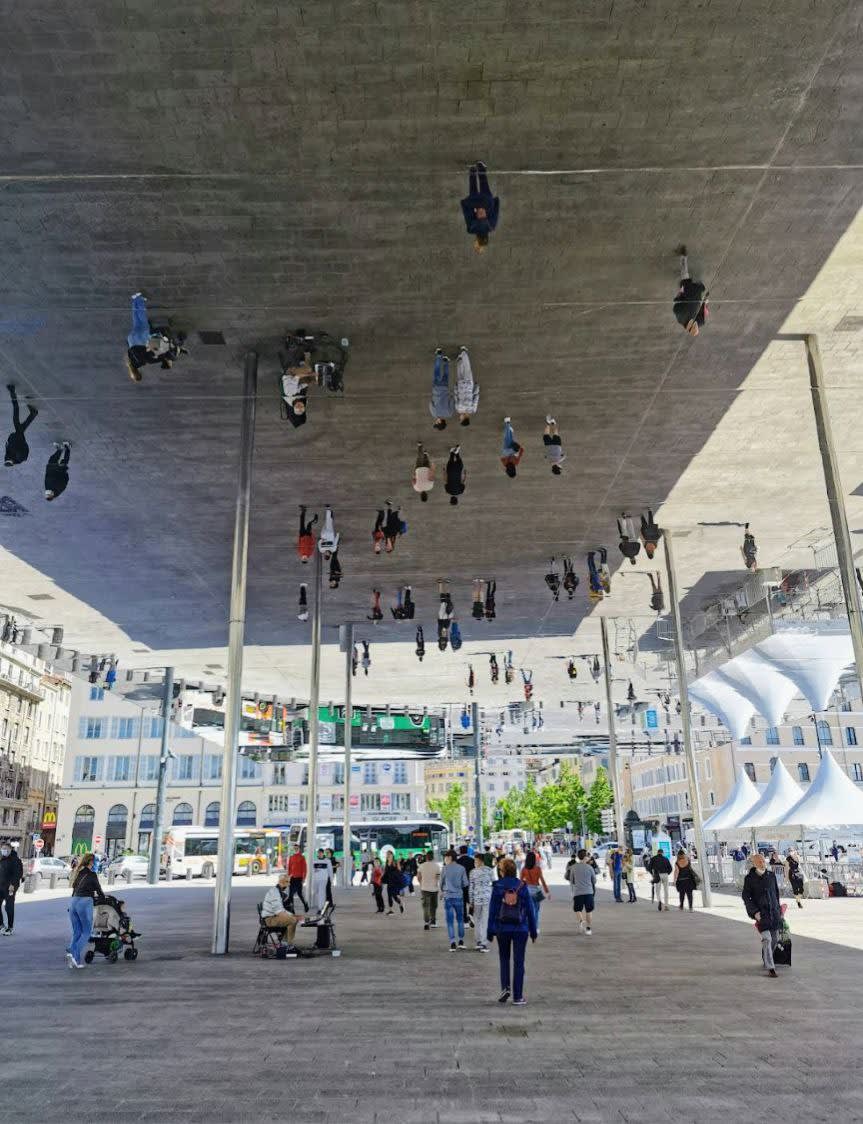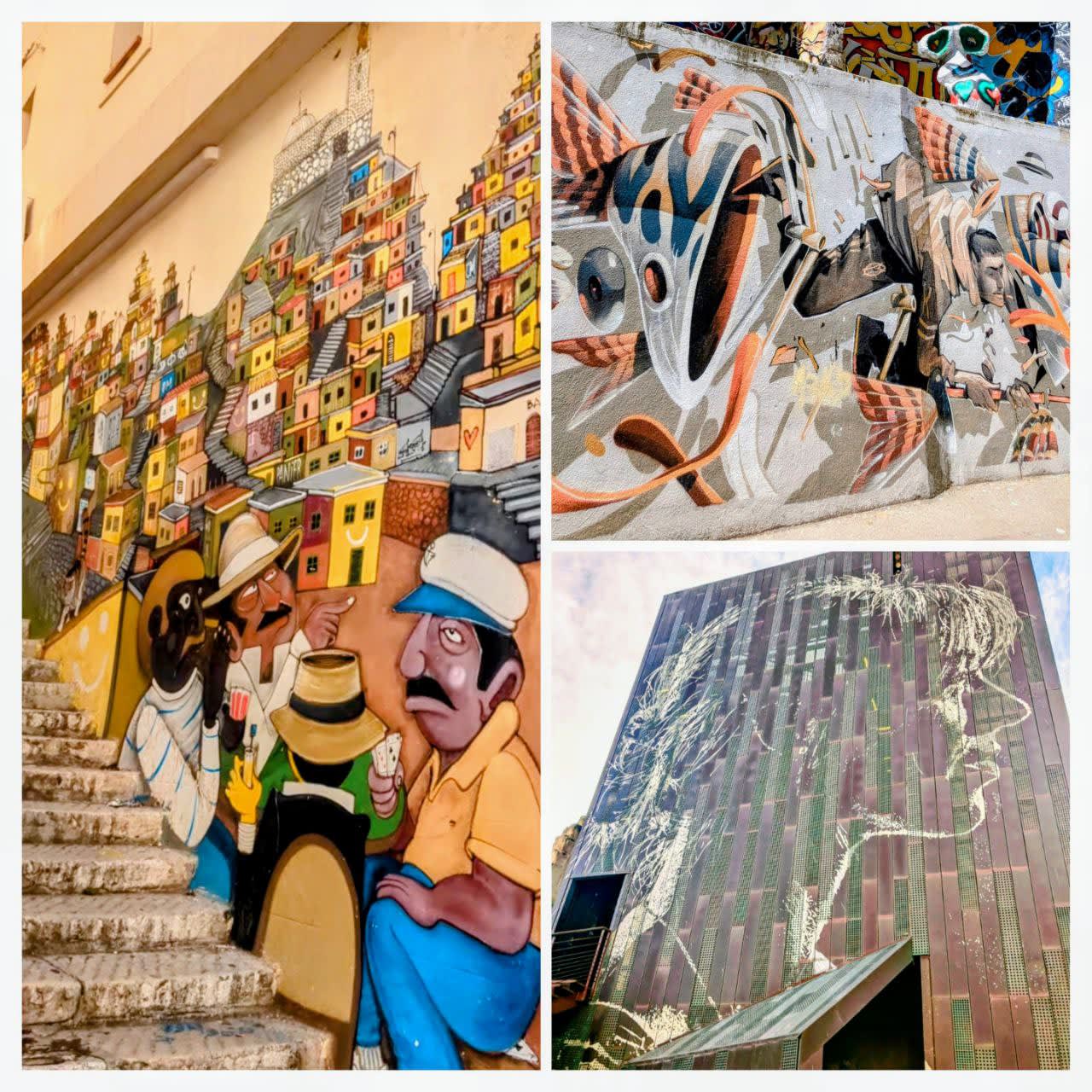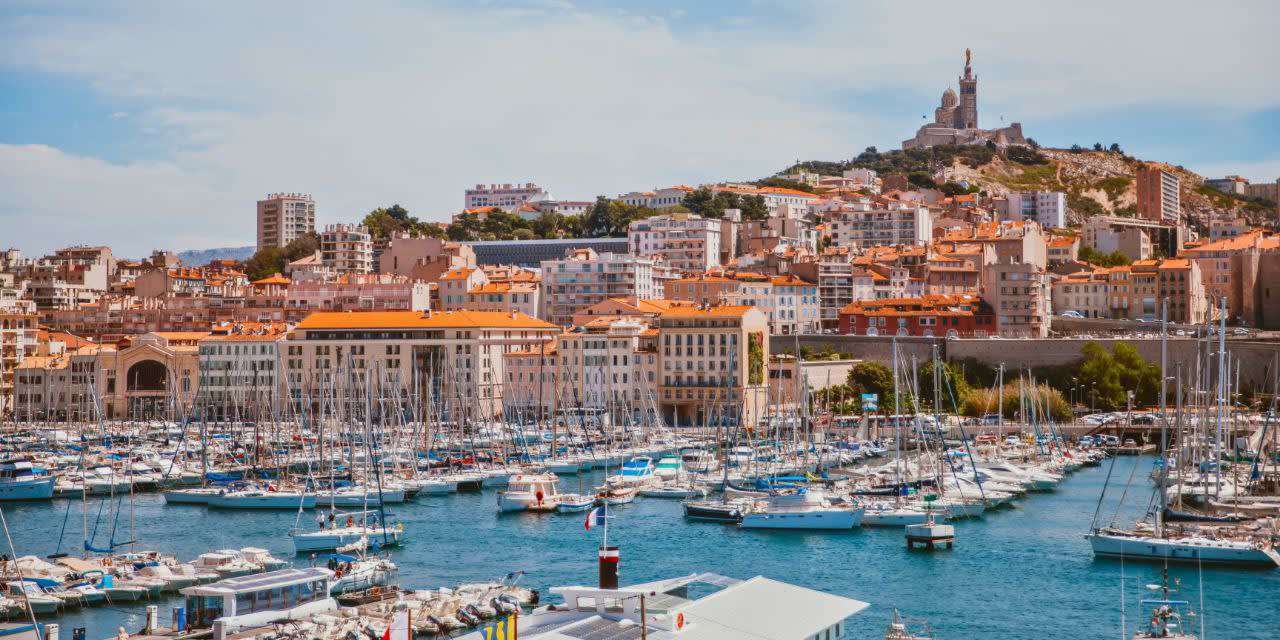Marseille: From First Impressions to Hidden Histories
Leaving Paris behind, we boarded a high-speed train to Marseille. France’s express trains, averaging 250 km/hour, made the journey south surprisingly quick.
After arriving in Marseille, we headed to our accommodation.
Our stay in Marseille
Our Airbnb was a room inside a beautiful house where we stayed with our hosts. Our host welcomed us and showed us our cozy little room. After freshening up, I went to meet the host and ended up having a long conversation, using google translate, trying to tell him about our two month long trip ahead and about India. Suneela, who stayed back in the room, was wondering why I was taking so long when I just went to fill some water. She also came down after some time and was surprised at me and the host having lively conversations with gestures without even knowing each other’s languages (i.e Host was speaking in French and I was speaking in English)
The stay also had a beautiful garden with a grape yard growing in front of the house. There were two Golden Retrievers who were super enthusiastic to meet us and play with us. It was our first experience staying with pets.

Despite the welcoming atmosphere at our accommodation, our first impressions of the surrounding neighborhood raised some concerns about safety.
Is Marseille Safe?
As we walked near our accommodation, we found streets filled with graffiti, parked cars and very few people around.
Wait, is this Marseille? Is it safe?
The city was quite empty until we reached the main area, which was bustling with people. There was a beautiful mirror roof where you could see your reflection as you walked beneath it. We also saw many African people running small braiding stalls below the beautiful roof. It felt a bit unhygienic with people cutting hair and not clearing the hair that had fallen on the ground. We then went to Old Quarter area which was filled with graffiti on all the walls. The graffiti everywhere gave us an eerie feeling. There is a reason this city got a reputation for being dangerous. As we found out the next day during our walking tour, there was nothing to fear as a tourist and the city had an interesting past with a lot of ups and downs.

Beyond the bustling main area, we discovered that Marseille had an impressive food culture, with numerous vegan restaurants scattered throughout the city. This was unexpected for a traditional port city, but it reflected the city’s diverse and progressive character.
Despite these initial concerns about safety, we had a very specific reason for visiting Marseille that made us determined to explore the city.
Why did we choose Marseille?
Earlier that year, we purchased a Telugu book named “Barrister Parvateesam”, a comedy novel set in the 1920s that describes the story of a simple-minded villager who decided to leave his home and go to England to study law. He had to take many transports while he travelled from Andhra Pradesh in India to London, UK. One of the transports was from Colombo to Marseille before making in-roads in France. We were super fascinated to learn about Marseille from the book, and wanted to make our way there.
This literary connection made our walking tour even more meaningful when we shared the story with our walking tour guide. Our guide’s enthusiasm about the story led us into a fascinating discussion about Marseille’s rich history, particularly its ancient connections.
Graffiti in Marseille
Marseille is filled with graffiti everywhere you look. And it made us wonder why? After talking to our tour guide, he mentioned that the economy in Marseille struggled in the early 70s and 80s and it has only started to rebound, thanks to tourism. He mentioned that graffiti initially allowed young people to express their frustration over the economy and lack of jobs, so that they found a creative outlet. Graffiti is commonly used for social activism and over the years everyone recognised it as a celebrated art form. It’s even said that if you don’t paint the outside of your house, someone else will.

While graffiti represents Marseille’s recent struggles, our guide revealed that the city’s history goes much deeper, literally underwater.
How ancient is Marseille?
One unique thing we learned from our walking tour was the Cosquer cave. The story goes that there was a scuba diver who dived on the shores of Marseille. At a depth of 36 metres, a cavity in the rock face caught his eye and he decided to explore it. After multiple attempts, he crossed the 175-metre-long passageway underwater. What he discovered was incredible: ancient paintings dating back 30,000 years, featuring deer, ibex, bison, handprints and even penguins. The cave today is unreachable as it is 120 metres deep, unlike prehistoric times, when the climate was different.
In Marseille, we went to the Cosquer Museum, a replica of the original cave. The experience was quite unique. We boarded a small vehicle that slowly moved us through different chambers of the cave, with strategic lighting illuminating the ancient paintings while audio explanations told us about their 30,000 year old history.

From ancient history, we moved to more recent times, learning about how Marseille faced destruction during World War II.
When a Building Had to Move
After WWII destroyed most of Marseille’s old port, only a few historical buildings survived, including Hotel de Cabre. When the street, Grand Rue needed widening in 1954, this 670-tonne building was moved using rails and hydraulic pumps. The original street name “rue Bonneterie” is still visible on the building façade.
After exploring a few other places in Marseille, our time here came to an end. What initially seemed like a dangerous, graffiti-covered city revealed itself as a place with incredible depth and history. In the next blog, we will share more details about the French Riviera and the tiny country known for Formula 1.


Yeswanth
Yeswanth
Technologist. Driven by the need to travel to every interesting nook and corner of the world! Loves adventure activities including paragliding, snorkelling, scuba diving and more.

Comments